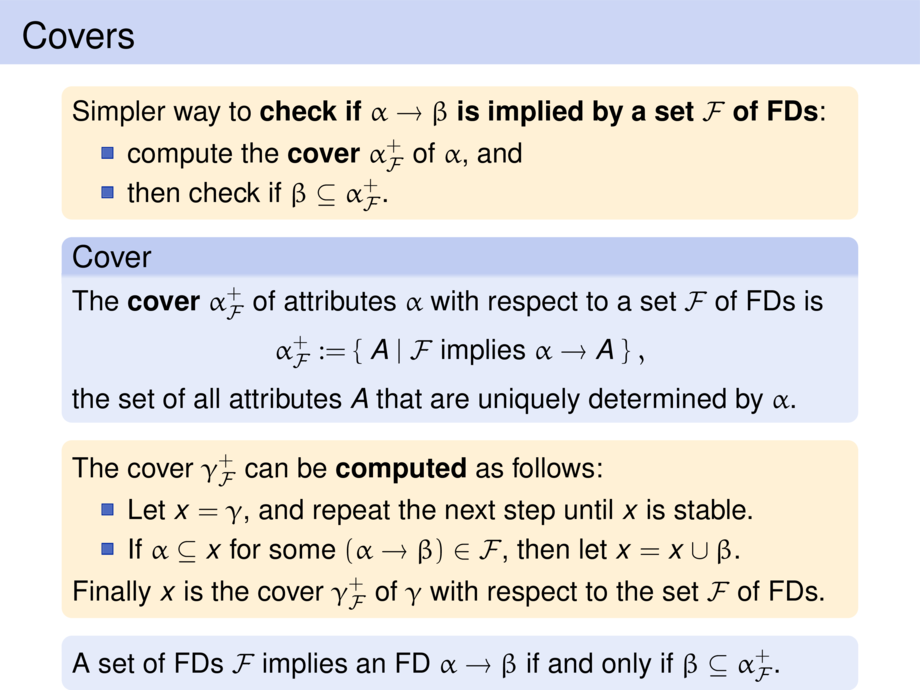



































































































68/291
\begin{frame}
\frametitle{Covers}
\begin{goal}{}
Simpler way to \emph{check if $\alpha \to \beta$ is implied by a set $\mathcal{F}$ of FDs}:%
\begin{itemize}
\item compute the \emph{cover} $\alpha_{\mathcal{F}}^+$ of $\alpha$, and
\item then check if $\beta \subseteq \alpha_{\mathcal{F}}^+$.
\end{itemize}
\end{goal}
\pause
\begin{block}{Cover}
The \emph{cover} $\alpha_{\mathcal{F}}^+$ of attributes $\alpha$
with respect to a set $\mathcal{F}$ of FDs is
\begin{talign}
\alpha_{\mathcal{F}}^+ := \{ \;A \mid \mathcal{F} \text{ implies } \alpha \to A \;\} \;,
\end{talign}
the set of all attributes $A$ that are uniquely determined by $\alpha$.
\end{block}
\pause
\begin{goal}{}
The cover $\gamma_{\mathcal{F}}^+$ can be \emph{computed} as follows:
\begin{itemize}
\item Let $x = \gamma$, and repeat the next step until $x$ is stable.
\item If $\alpha \subseteq x$ for some $(\alpha \to \beta) \in \mathcal{F}$, then let $x = x \cup \beta$.
\end{itemize}
Finally $x$ is the cover $\gamma_{\mathcal{F}}^+$ of $\gamma$ with respect to the set $\mathcal{F}$ of FDs.
\end{goal}
\pause
\begin{block}{}
A set of FDs $\mathcal{F}$ implies an FD $\alpha \to \beta$
if and only if $\beta \subseteq \alpha^+_{\mathcal{F}}$.
\end{block}
\vspace{10cm}
\end{frame}

